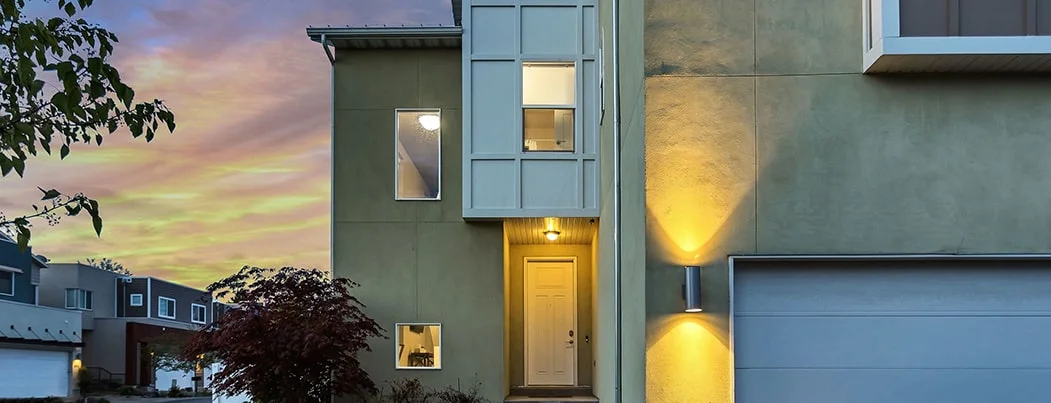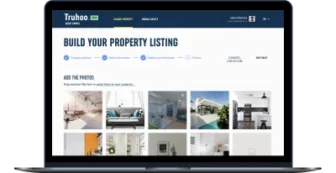The COVID-19 pandemic has caused home prices to soar in the US, as fewer people have been looking to sell while homebuyers have been flooding the market. However, the situation is gradually improving.
In April 2020, Fannie Mae polled a representative sample of 1,006 US household financial decision-makers aged 18 and older as part of The National Housing Survey. The survey revealed that only 29 percent of respondents were ready to sell their properties. Since then, the number of potential sellers has been rising. The same survey conducted in March 2021 among 1,000 financial decision-makers revealed that 61 percent of respondents wouldn’t mind selling.
Alongside the number of potential sellers, interest in real estate app development is also growing. According to the Home Buyer and Seller Generational Trends 2021 Report by the National Association of REALTORS® Research Group, 76 percent of home buyers use mobile phones or tablets for their home search, and new real estate apps are constantly emerging. This article sheds light on current trends in the US real estate mobile app market.
What has shaped the current US real estate market?
Agents continue to play the leading role in the US real estate market, with 87 percent of buyers seeking an agent’s help. However, property information that was once only accessible through real estate agents or brokers is now available through search engines and mobile applications.
More than 90 percent of real estate companies have websites with home listings and 97 percent of home buyers use the internet to search for properties. The average buyer uses a smartphone to look through real estate aggregators with photos, property listings, and websites about the buying process. A buyer then gets in touch with an agent and visits several homes before buying one.
At Yalantis, we helped our clients develop real estate apps called HomeSway and Truhoo that provide a better home tour experience. We also are a technical partner of Zillow, the top real estate provider. You can read their feedback on cooperation with us on Clutch.
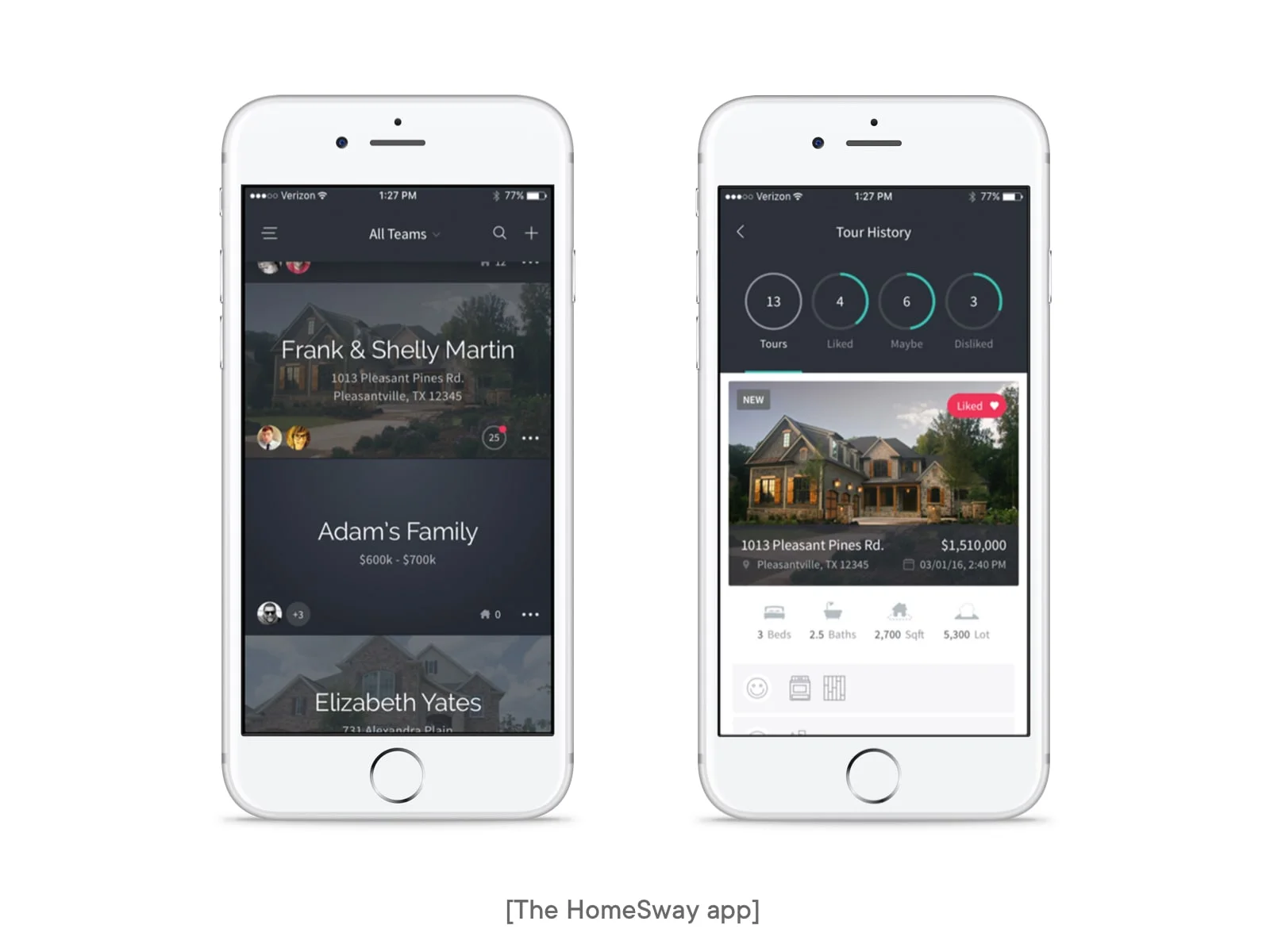
Who made the biggest impact?
Zillow and Trulia have transformed the housing market and made the home buying process more transparent.
How Zillow and Trulia managed to revolutionize the housing market
Originally, neither Zillow nor Trulia was in the business of selling homes. Instead, they sold advertising to real estate agents. This enabled them to provide more insights and transparency into the housing market compared to trade associations and housing industry establishments like the National Association of REALTORS® (NAR).
According to Stefan Swanepoel, a consultant and writer on real estate trends, portals like Zillow and Trulia have created a whole new trend of real estate lifestyle surfing. People who engage in real estate lifestyle surfing are interested in home prices and community information even though they may not be in the market to buy or sell a home.
Merger between Zillow and Trulia
In 2015, Zillow acquired Trulia, and this combined entity has become the biggest player in the online real estate market. In terms of monthly traffic, Zillow had 36 million visits and Trulia had around 23 million visits in January 2020.
The merger has had a crucial impact on Zillow’s development: around half of Trulia’s visitors weren’t using Zillow before the acquisition. Now the websites complement each other. Zillow concentrates on the full lifecycle of owning and living in a home, while Trulia focuses on the home search process.
The company’s websites and apps had a combined total of around 201 million monthly visitors during the fourth quarter of 2020 and 9.6 billion visitors during the whole of 2020, up 19 percent from the previous year. Zillow’s estimated 2020 ad revenue is $1.5 billion.
Zillow business development
Despite Zillow’s earlier statements that they would never sell real estate, in 2018, they became investors themselves and launched the Zillow Offers program. The company started buying users’ homes to resell them to other users. Now, Zillow Offers is the most profitable segment in the company. In 2020, this program brought $1.7 billion in revenue with 5,337 homes sold.
In 2019, Zillow also introduced the Zillow Home Loans program, offering purchasing and refinancing loans to home buyers directly from a Zillow affiliate. Zillow has gone a long way, from showing buyers homes to actually purchasing them and offering loans.
Zillow’s acquisitions
According to Bloomberg, the deal between Zillow and Trulia is the largest acquisition for Zillow thus far. But it certainly isn’t the first and won’t be the last. Here’s a short list of some of the companies Zillow has acquired over the years:
- Leading New York–based real estate website StreetEasy
- Agentfolio, a collaboration tool to help real estate professionals and home buyers stay organized and communicate effectively
- Map-based apartment and home rental search engine HotPads
- Retsly (now offered as part of Bridge Interactive Group), a service that helps developers access real estate data from Multiple Listing Services (MLSs). Bridge Interactive Group offers a variety of listing data management tools for real estate professionals, including tools for managing Internet Data Exchange (IDX) and virtual office websites (VOWs).
Since acquiring Trulia, Zillow has kept buying up other companies to expand its sphere of influence. Zillow has receipts for dotloop, Mortech, and Naked Apartments. In 2021, Zillow is poised to acquire ShowingTime, the real estate leader in scheduling home tours, for $500 million.
All of the above-mentioned Zillow acquisitions indicate that the company is constantly aiming at improving the user experience. As a successful real estate platform, Zillow offers accurate property search functionality, various tools for real estate professionals, verified property listings, 3D home tours, and more. In this article, we thoroughly discuss how to implement such functionality based on our experience.
In full disclosure, Yalantis has worked with Zillow on some of the apps the company has acquired. We provided realtor mobile app development services for Agentfolio and took part in developing the StreetEasy app.
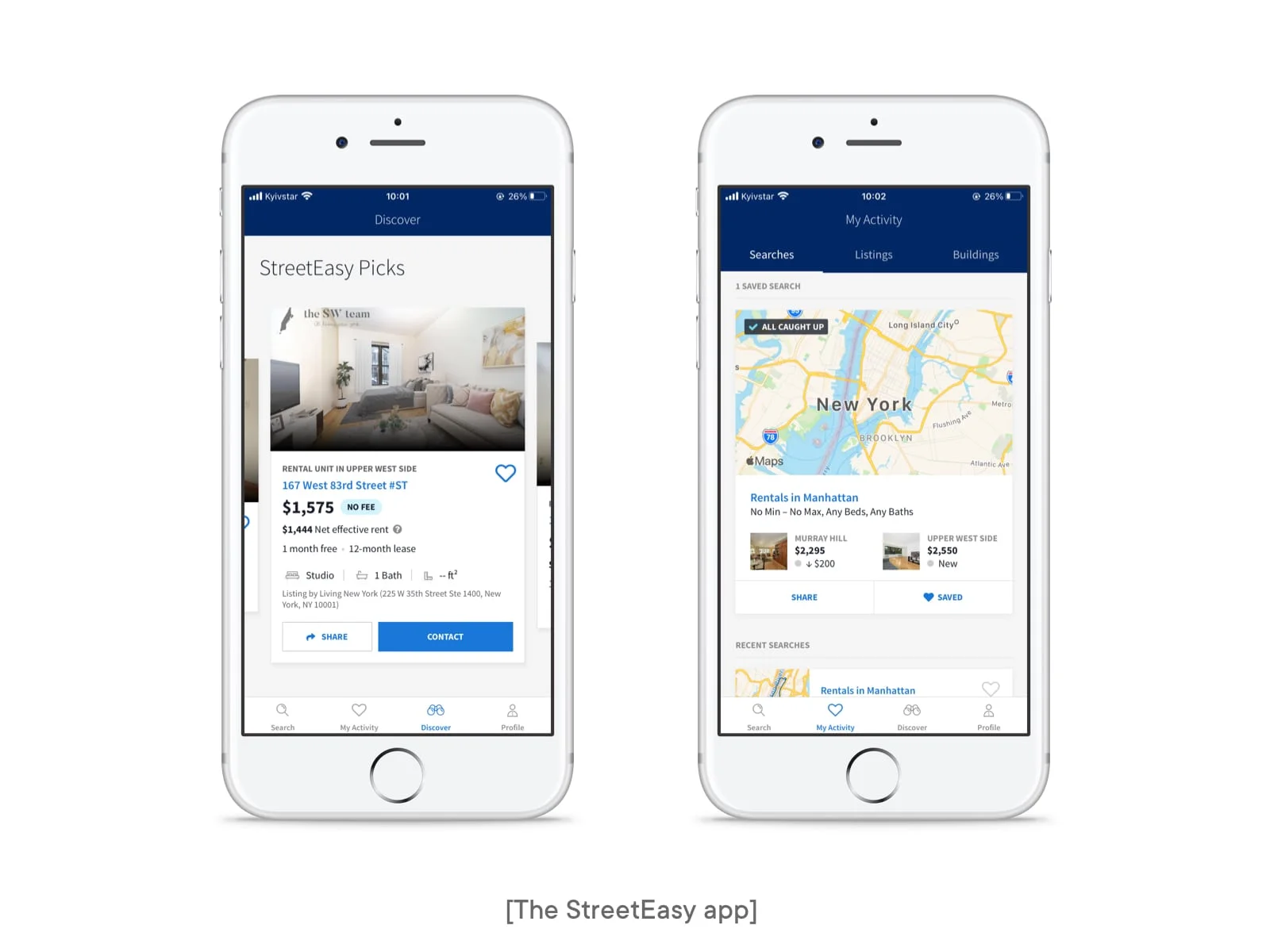
What you need to know if you want to develop an app like Zillow or Trulia
Zillow and Trulia complement each other, and this applies to their apps. Both companies have a number of apps serving different business needs, including mortgage and rental apps.
In case you’re thinking about developing an app similar to Zillow or Trulia, we thought it would be worthwhile highlighting a few of their prominent features. This should save you a bit of time on researching the competition.
Zillow and Trulia provide home search and detailed listings of properties for sale and for rent. There isn’t much difference in functionality between these apps.
Users prefer one over the other for their sorting criteria. For example, Zillow users can view a Transit Score for each property, which measures how well a location is served by public transportation. Others decide on Trulia as it provides more neighborhood details including a crime map, diverse ratings from locals, and reviews about things such as whether a district is quiet or the streets are well-lit.
There’s one main difference between the two brands: Trulia Real Estate is built to simplify the search for properties for sale. On the other hand, Zillow Real Estate provides guidance at every step of the home buying process, including purchasing, selling, financing, and remodeling.
Let’s spell out the ingredients both apps have in common and see why they’re important so you don’t miss any key points in your own app.
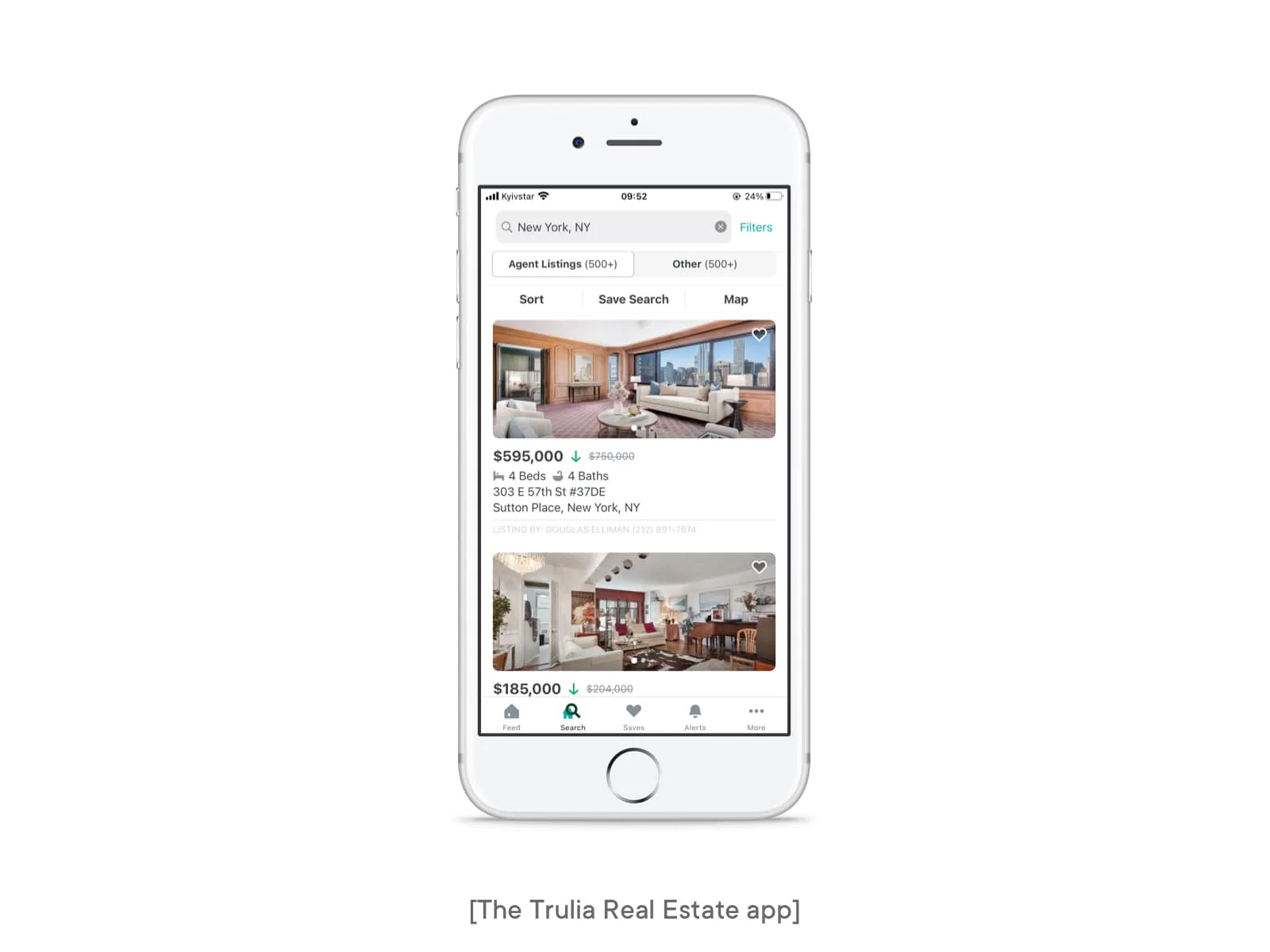
Databases are crucial
A database is a crucial component in real estate mobility solutions, as data has to come from somewhere. The real estate industry in the US is still run by the MLS system, and even big portals like Zillow and Trulia depend on MLS to find information about homes.
How does Zillow get listing data?
Zillow receives MLS listing data in a feed when real estate brokers opt into listing syndication with the Zillow Group. You can also receive listing data with the help of third-party apps like SimplyRets, iHomeFinder, and Spark APIs. These apps normalize MLS data flows, as fields in each area’s MLS database have to match up with the database of each real estate company to show the data in the company’s usual format.
However, Zillow receives listings from an MLS only in some cases. Most of its listings are taken from listing syndication platforms, brokers, and agents. According to the Zillow Group website, Zillow’s database contains information on more than 135 million US homes.
Right after Zillow acquired Trulia, there was a popular opinion that the bigtime deal would lead to Zillow becoming the owner of a proprietary network that would pull brokers away from NAR (a housing industry establishment) and unseat MLSs entirely. However, Zillow, which gets more traffic than all of its competitors nationwide, still uses MLS listings.
How to use the Zillow API
If you want to create a full system like Trulia or Zillow, you’ll eventually have to comply with rules established by NAR regarding public property details. You’ll also have to deal with local MLSs in the US. But in the short run, to prove your product works, you can start using APIs from Zillow.
Keep in mind that you can use the Zillow API only to retrieve and display dynamic Zillow content without the ability to store it. You’re also not allowed to create an app using the API that doesn’t have links back to Zillow. You can find a full list of FAQs related to the Zillow API on their website.
By the way, improper use of Zillow’s proprietary data may damage your business. In 2019, Zillow accused the real estate company Compass of a non-compete violation and stealing intellectual property. Eventually, the conflict was resolved and both parties reached common ground. But make sure to avoid similar mistakes and always stick with Zillow’s terms and regulations.
Advanced search functionality is more of a requirement than a recommendation
It’s advisable to integrate analytics into your app or gather data from the server to know what your users are most interested in when looking for properties. We recommend starting with an MVP and continually enhancing your product. With so many geographical areas and user segments, it’s important to find the best fit for your app.
Filtered search is extremely important for real estate apps. The better structured your data, the better your app’s user experience. Try to organize information so that property listings highlight the most popular criteria for home buyers. You can separate must-have search criteria like location, property type, and price range from other criteria like square footage, on-site parking, in-unit laundry, year built, and whatever else you think is important to include.
Also, implement a save search feature to retain users. Saving searches or liking properties isn’t only useful for keeping a list of homes in one place; it also makes it possible for a realtor to see what a client prefers and suggest similar options. An app should also send push notifications when a new house is listed that matches a user’s search criteria.
Let’s go back to the Zillow and Trulia apps and discuss their search functionality. Even though they each have a separate app for rentals, they put homes for rent alongside homes for sale in the search menu. By having two apps perform one and the same function, the company aims to acquire more users. In addition, every single Zillow and Trulia app promotes other apps the company owns (e.g. apps for agents, mortgage calculators), thus increasing customer loyalty to Zillow brands.

Listings should portray data graphically
What’s the best way to get users to engage with information about real estate listings? By presenting it visually. Portraying data graphically reveals patterns that are difficult to detect otherwise. Graphs and pictures always beat long descriptions. Your app can have both, but don’t overload it with too much information.
Zillow and Trulia listings differ. They both, however, have graphical components like a monthly mortgage breakdown. There are a huge number of ways to display information graphically on both iOS and Android. You can find an SDK with developer resources for any type of chart and graph.
Apart from maps and pictures of properties, including other properties in the neighborhood, these apps can redirect you to Google Street View and Google directions with one click. This feature is both simple to implement and valuable for end users because it adds transparency.
One of the unique features Zillow has is an estimated market value tool called Zestimate, which is a starting point for determining a home’s market value or monthly rental price. This estimate is based on public data like neighborhood market guides and forecast calculations.
Read also: How to Build a Real Estate Web Platform: Core Features and Add-Ons
What to put on the map and how to make it look nice
Neighborhood information plays a big role in a real estate app, especially now as home buyers are paying more attention to the community they plan to live in. In Zillow’s app, you can access neighborhood information by clicking on the map. Markers attached to places display information filtered according to specified criteria. If there’s too much information to show, you can cluster your markers; in other words, you can put a large number of markers on the map without making it hard to read.
The Trulia app also provides detailed neighborhood information. As soon as a user has chosen a house, they can check the crime level, availability of schools and stores, and other local information. The section “What Locals Say” gives crowdsourced insights.
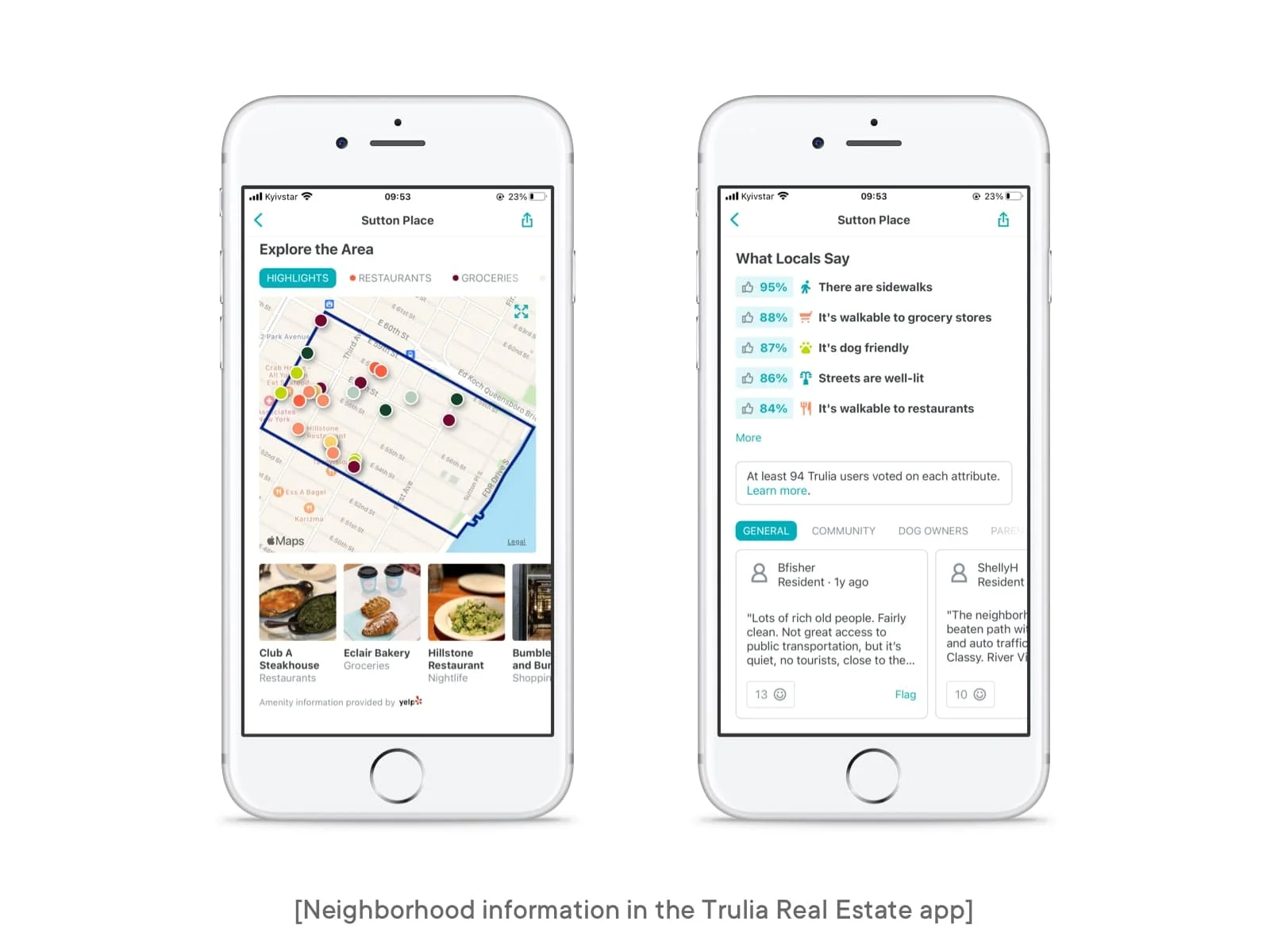
Together with placing markers at locations such as schools, Trulia has heat maps that use colors to represent the distribution of data. You can consult Google Maps documentation for information on implementing a heatmap utility on Android and displaying overlays on a map in the iOS developer library.
Maps in both the Trulia and Zillow apps have a draw feature, which makes them super convenient. You can circle an area with your finger and the map will show you all listings of interest within this zone.
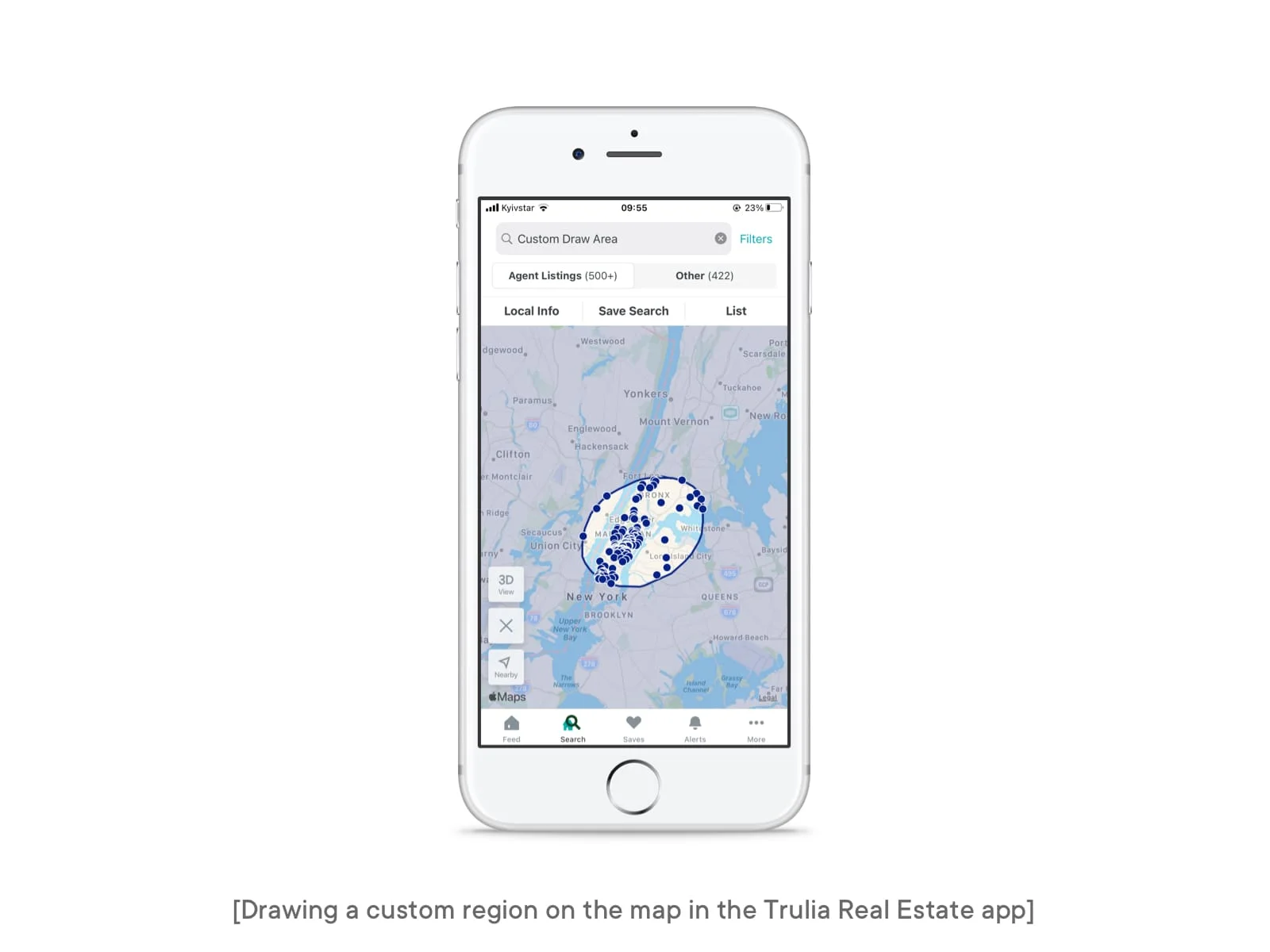
Read also: Our UI/UX Design Framework
Real estate technology trends
According to the 2019 edition of Inman Disconnect, home buyers and real estate agents will swap roles over the next five years. In the future, agents will seek clients as opposed to home buyers and sellers seeking agents. The number of real estate agents will shrink, and only the most competitive will remain. How can you seamlessly connect agents with sellers and buyers? Let’s find out how to do this in the rapidly changing market.
Matching customers and agents
The following three brands have already built their real estate businesses around the principle of matching.
Nobul.com is an online Canadian real estate marketplace that allows agents to compete for clients. The service enables buyers and sellers to compare agents’ services and decide on the agent they prefer. On Nobul.com, a buyer/seller describes the type of real estate they want to buy/sell. Interested agents can then reach out with their offerings. Nobul charges agents a 50 basis points referral fee – $5,000 per $1 million of real estate value – for closed deals.
Property Whispers is an Australian matching platform that covers the residential marketplace, including real estate that’s advertised for sale and that’s for sale off-market. The platform is appreciated by agents, brokers, and vendors since it helps them get the contact information of matched buyers.
In a world where traditional advertising campaigns cost thousands of dollars, Property Whispers currently offers real estate agents an unlimited number of listings for free upon registration. Private vendors pay only AU$49 plus GST to list their properties.
Homes.com is also built around the matching principle. The platform provides a kind of conversational search that navigates a buyer to their ideal location and provides average area pricing based on the criteria that matters most to a buyer. Filters such as year built, listing type, and view enable users to find relevant listings.
Virtual tours and video walkthroughs
According to the National Association of REALTORS®, seven in ten real estate agents think videos and virtual walkthroughs have played a crucial role in the home buying process since the beginning of the COVID-19 pandemic.
It’s also great that people can minimize travel to homes they would like to see thanks to virtual tours. With virtual tours, home buyers don’t need to schedule multiple real estate showings before deciding on a property to buy. Virtual tours are also helpful when people want to purchase a house overseas.
The Zillow 3D Home feature, which is totally free for listing agents, integrates with Zillow and Trulia listings. Agents just have to capture panoramas and the app automatically creates a tour. There are also apps dedicated solely to virtual tours. Realync allows users to interact via live video and audio, take pictures and notes, and send messages. Each tour is automatically saved to the cloud for later access and sharing.
Video walkthroughs are another common practice to show properties remotely. Walkthroughs are short videos of a listing recorded by a mobile phone or some other device. The Zillow Real Estate app (iOS and Android) has a feature for uploading such videos.
Read also: How we Ensure Stability, Performance, and Maintainability of Your IT Product Under High Load
Real-time messaging
Real-time chats enable a constant connection between the app and the server. In this case, the server knows the online/offline status of each user and can make sure messages are delivered instantly.
Real-time chats are typically implemented with the XMPP protocol. This protocol has to be transported across the network using a transport binding such as TCP/IP (used with native clients on devices), HTTP, or WebSockets.
There are several ready open source and paid solutions for integrating real-time chats into an app, including Pubnub and Socket.IO.
Read also: An Extensive Guide to Messaging App Development
Augmented reality (AR)
There are lots of ways that AR technology can be implemented in a real estate app. One possibility is to allow users to customize their potential homes by choosing different wall colors or adding and moving furniture.
For instance, the Curate app allows real estate agents to visualize empty spaces in homes with furniture using AR during showings. This way, home buyers can get a more true-to-life experience and decide quicker on purchasing a home.
Read also: Writing a Request for Proposal to Your Potential Software Partner
Challenges to ensuring smooth interactions
Apps that support showings on demand cater to people’s growing appetite for immediate gratification, but they also raise a number of concerns for agents, homeowners, and home buyers.
Safety. Traditionally, a buyer first meets an agent in the office for an initial conversation and only then arranges showings. Digital real estate apps don’t require the agent to be acquainted with a potential buyer, and meeting a stranger might be dangerous. Apps like Silent Beacon and Trust Stamp are tailored to ensuring realtors’ safety. Silent Beacon, for example, has a panic button and is considered the most trusted app. It provides a list of emergency contacts to send alerts to by means of call, email, or text message. In addition, Silent Beacon shows an agent’s current location to trusted people within five seconds.
Suitability of agents. Nobul ranks all agents and assigns them a score based on clients’ feedback. This model provides healthy competition, where the most professional and reputable agents compete for customers and offer them incentives.
These are the components you need to pay attention to when building your own real estate app. Zillow Group, despite its leadership, still has plenty of competition from other sites and mobile apps such as Realtor.com and Homes.com as well as from Coldwell Banker, Re/Max, Century 21, and other real estate brokers. You should check them out if you decide to get into digital real estate.
Yalantis has expertise in developing real estate software solutions for the US and European markets. Share your product vision with us and we’ll deal with the rest.
Want to explore our real estate software development expertise?
Check out a GDPR-compliant and SEO-friendly real estate app
Have a look at itRate this article
4.2/5.0
based on 170 reviews
